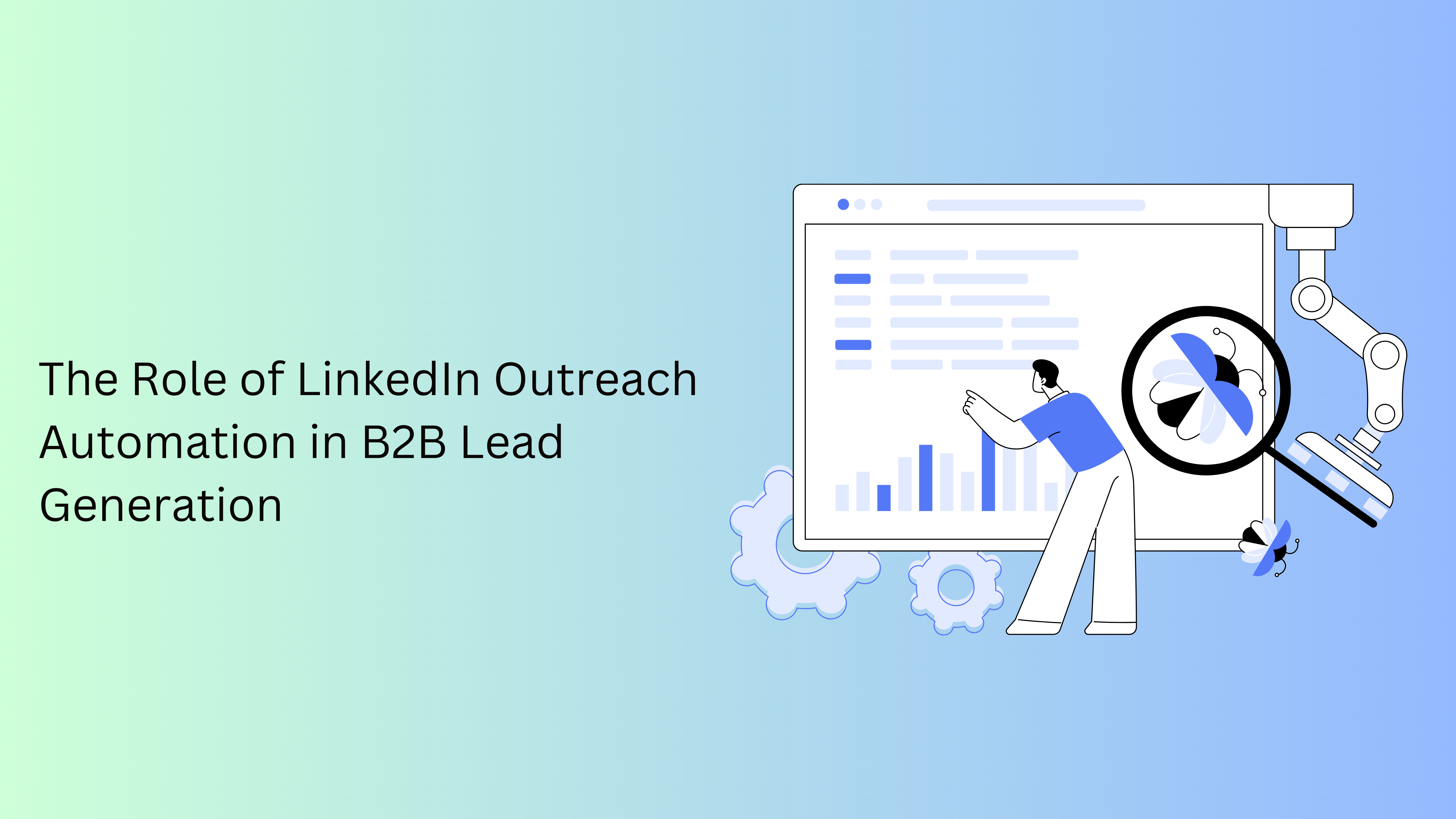Last updated : December 10, 2024
LinkedIn has become an essential platform for B2B lead generation, connecting businesses with decision-makers, influencers, and potential partners. Among the tools and strategies available, LinkedIn outreach automation has emerged as a game-changer, enabling professionals to streamline and scale their efforts.
This blog explores the role of LinkedIn outreach automation in B2B lead generation, its benefits, limitations, and best practices to optimize its use.
Why LinkedIn Is Vital for B2B Lead Generation
LinkedIn stands out as a premier platform for B2B professionals due to its focused audience and networking features:
- Over 900 million users, including executives and decision-makers.
- Tools for advanced search and targeting based on industries, roles, and company sizes.
- Opportunities for building thought leadership through content sharing.
However, manual outreach can be time-consuming and resource-intensive, which is where automation tools come in.
What Is LinkedIn Outreach Automation?
LinkedIn outreach automation involves using software to perform repetitive tasks, such as sending connection requests, personalized messages, and follow-ups. These tools help professionals manage larger-scale campaigns efficiently while maintaining consistency.
Common Tasks Automated:
- Sending bulk connection requests with tailored messages.
- Following up with unresponsive leads.
- Exporting lead data for analysis and CRM integration.
Benefits of LinkedIn Outreach Automation in B2Bs
- Time Efficiency Automation eliminates the need for manual, repetitive tasks, allowing sales and marketing teams to focus on higher-value activities like strategy and closing deals.
- Scalability Reaching hundreds or thousands of potential leads manually is impractical. Automation enables large-scale outreach while maintaining personalized messaging.
- Consistent Follow-Ups One of the biggest challenges in B2B sales is timely follow-ups. Automation ensures no opportunity slips through the cracks by scheduling and sending follow-up messages.
- Enhanced Targeting Many automation tools integrate with LinkedIn’s advanced search filters, enabling precise targeting based on industry, location, job title, and more.
- Analytics and Insights Automation platforms provide detailed reports on outreach performance, such as connection rates, response rates, and campaign success metrics.
Challenges and Risks of LinkedIn Outreach Automation
While automation offers significant advantages, it’s not without challenges:
- Risk of Account Restrictions LinkedIn’s terms of service prohibit unauthorized automation. Excessive or poorly managed automation can lead to account warnings or bans.
- Impersonal Messaging Over-reliance on automation can make messages feel generic, reducing the likelihood of meaningful engagement.
- Data Quality Issues Inaccurate targeting or incomplete profiles can result in wasted outreach efforts.
- Over-Automation Sending too many requests or messages in a short period may flag your account as spammy, harming your reputation.
Best Practices for Using LinkedIn Outreach Automation
To maximize the benefits of automation while mitigating risks, follow these best practices:
- Use Trusted Tools Choose automation tools that prioritize compliance with LinkedIn’s policies, such as QuickLead.io, Expandi, and Dux-Soup.
- Define Clear Objectives Establish clear goals for your outreach campaigns, such as lead generation, meeting bookings, or relationship building.
- Focus on Personalization Even with automation, ensure messages are tailored. Include the recipient’s name, relevant achievements, or mutual connections.
-
Limit Daily Activity
Stay within LinkedIn’s recommended daily activity limits to avoid account restrictions:
- Connection requests: 50-100/day.
- Messages: 20-30/day.
- Monitor and Adjust Campaigns Regularly review campaign metrics to identify what’s working and what’s not. Adjust targeting, messaging, and follow-up sequences as needed.
- Combine Automation with Manual Efforts Use automation for initial outreach and follow-ups but switch to manual engagement for warm leads and high-value prospects.
The Impact of LinkedIn Outreach Automation on B2B Sales
LinkedIn outreach automation has transformed how businesses approach lead generation. By enabling:
- Faster Pipeline Growth: Automation accelerates the process of building a robust lead pipeline.
- Higher Response Rates: Well-targeted and personalized campaigns lead to more meaningful conversations.
- Improved ROI: Time and cost savings translate into better resource allocation and higher returns.
Conclusion
LinkedIn outreach automation plays a vital role in modern B2B lead generation strategies. By combining scalability, efficiency, and data-driven insights, automation tools empower businesses to connect with their ideal audience effectively. However, the key to success lies in using these tools responsibly—balancing automation with genuine, human interaction to build lasting relationships.
Ready to optimize your LinkedIn outreach efforts? Explore tools like QuickLead.io to streamline your lead generation process.
